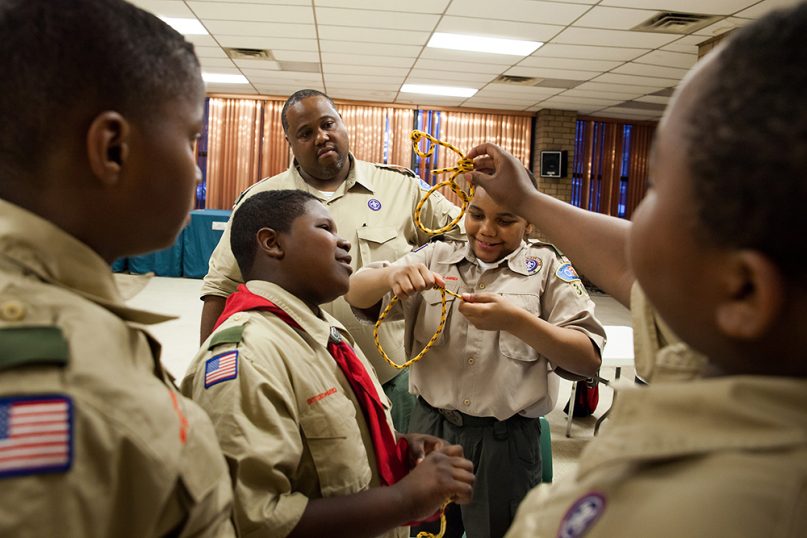
PHILADELPHIA (RNS) — It was cold and dark on a December afternoon but the crowd at the Philadelphia Center for Architecture was packed in, standing at the back and down the sides of the room — clergy shoulder to shoulder with architects, ordinary citizens with community organizers. They were gathered to see the results of Infill Philadelphia, a design competition hosted every couple of years in the city to improve community spaces.
This year’s competition, Sacred Places/Civic Spaces, focused on three religious properties — the Philadelphia Masjid, a mosque in the Mill Creek neighborhood; the Wharton-Wesley United Methodist Church in Cobb Creek; and Zion Baptist Church in north Philly — that are open to more than only their congregations.
“Almost 90 percent of the people they serve in those buildings are nonmembers,” said Bob Jaeger, president of the nonprofit Partners for Sacred Places, which teamed with another group, Community Design Collaborative, to commission the design proposals at last month’s reveal.
Despite their crucial role in their neighborhoods, the congregations face difficulties familiar to many urban religious organizations: real estate with lots of potential, lots of problems and not enough congregants to pay for renovations. “These are de facto community centers, and yet, they’re only using a third or 20 percent of their space,” said Jaeger.
The issues facing these sacred spaces was the subject of a 2017 report by the Pew Charitable Trusts, which found that many of Philadelphia’s 839 historic sacred spaces were in need of “significant investment” and that “as buildings deteriorate and attendance at religious services shrinks, a significant number of congregations will have to determine what to do with their worship homes in the years ahead.”

Scouts work on knots at Zion Baptist Church, one of the properties participating in the Infill Philadelphia Sacred Places/Civic Spaces competition. Photo courtesy of Chris Kendig
“For them to thrive, they have to be more creative,” said Jaeger, who pointed out that what’s happening in Philadelphia is happening everywhere. “This whole issue is at a tipping point, there are so many of these places at risk,” he said. “I think it’s time for us as a society to say: Do we want to lose that many? Can we come up with creative ways to save the best of these places?”
The three historic houses of worship are valuable as community hubs, said Heidi Segall Levy, Community Design Collaborative’s director of design services. But what drew her to the project was the Pew study, in which there’s a reference to a 2006 study by University of Pennsylvania professor Ram A. Cnaan showing how many congregations provide social services of some kind to their communities. Another study, by Partners for Sacred Places, estimates that the total economic impact of the average historic sacred space is $1.7 million.
Based on these findings, Sacred Places/Civic Spaces wanted to show what each house of worship could do if it were redesigned to realize its potential for both congregational and community programming. Each congregation was paired with a design team and a community organization that would help engage their neighbors.
The Philadelphia Masjid was paired with the People’s Emergency Center, a housing support agency. Wharton-Wesley United Methodist Church worked with ACHIEVEability, which focuses on poverty among single parents. Zion Baptist Church was joined by a community development organization, Called to Serve CDC.
Aided by Partners for Sacred Spaces, the design teams began with asset mapping, which meant, said Jaeger, “connecting the dots between ‘What does this building offer?’ and ‘What does the community need?’”
“A lot of the time you go into pro bono projects, which tend to be in underserved neighborhoods, and the initial instinct is to walk in and say, ‘What do they need that they don’t currently have?’” said Caitlin Youngster, a senior designer for HOK, the architecture, engineering and planning firm that was partnered with the Philadelphia Masjid, a community of 500 Muslims housed in a former grade school built in 1922. “The purpose of this exercise was to look at what they already have and say, ‘How can we take that and give you a space to make it even better?’”
Click here to read more.
Source: Religion News Service